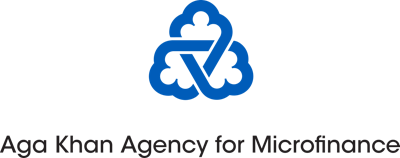Aga Khan Agency for Microfinance
For more than 60 years, AKDN agencies have offered microfinance services through integrated development programmes and self-standing institutions. In 2005, these programmes were brought together under the Aga Khan Agency for Microfinance (AKAM), a non-profit foundation that operates microfinance institutions in countries across Africa, the Middle East and Central Asia.
240,000
First Microfinance Bank Afghanistan has 240,000 clients.
10,000
Premiere Agence de Microfinance Cote d’Ivoire disburses more than 10,000 loans per year.
81%
Borrowers in rural areas account for 81 percent of all clients served by Premiere Agence de Microfinance Burkina Faso
240,000
First Microfinance Bank Afghanistan has 240,000 clients.
10,000
Premiere Agence de Microfinance Cote d’Ivoire disburses more than 10,000 loans per year.
81%
Borrowers in rural areas account for 81 percent of all clients served by Premiere Agence de Microfinance Burkina Faso
Prince Amyn Aga Khan
Istanbul, October 2009
Since then, AKAM has helped individuals, households and small businesses across several countries to achieve financial self reliance. We have established and developed microfinance institutions offering loans to underserved populations, tailored to needs ranging from home sanitation infrastructure to livestock acquisition. Other services include opening savings accounts and handling remittances, facilitated by digital banking channels.
Over the years, these institutions have established a presence for themselves in their respective markets. As they evolve into self-supporting commercial entities, we transfer part or whole of their ownership to other agencies within or outside AKDN. We then withdraw from their operations to refocus resources towards developing new areas.


Agricultural Lending
We offer agricultural loans to underserved rural areas where poverty is high and agriculture is critical to livelihoods.


Housing Loans
We offer home improvement loans to 30,000 clients, alongside free construction advisory services.


Quality of Life Loans
Our quality of life loans help the excluded become self-reliant and graduate into mainstream financial markets.


Remittances
Our affiliates help clients access remittances in countries where they are a major source of income.


Savings
Micro-savings accounts enable clients to save their money safely and with remuneration, protecting them from income fluctuation.


Small and Medium Enterprises
As clients outgrow microfinance, we can often offer them small commercial loans to develop their businesses.
Contact the Aga Khan Agency for Microfinance
Tel: +41 22 909 72 00
Fax: +41 22 909 72 90
1-3 Avenue de la Paix
1202 Geneva
Switzerland
